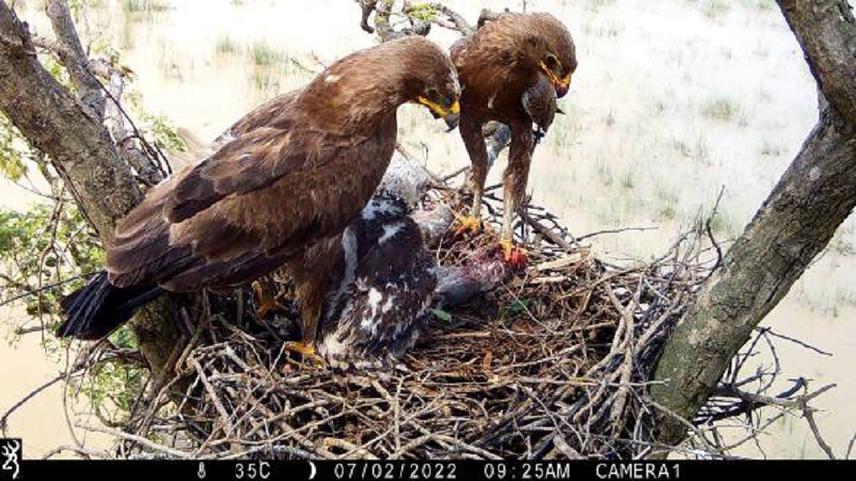Sandesh Gurung
Other projects
2 Feb 2018
Eagle of the Farmlands: Biology, Threats and their Conservation Actions of the Indian Spotted Eagle (Clanga hastata Lesson 1831) in Lowlands of Nepal
Based on our baseline data on breeding biology from the previous project and existing threats to Indian Spotted Eagle (ISE), we planned to install camera traps in the nest for the entire breeding period to acquire concrete robust data regarding on its breeding ecology. Additionally, we plan to mitigate the issues of habitat conversion and threats of ISE through the meeting with authoritative organization by changing tree plantation strategy and maintain good habitat by tree plantation, building artificial nest or nest platform, providing farmer’s training program to discourage chemical pesticides and conducting school campaign to imprint conservation concept among in students.

Indian Spotted Eagle with chick.
Indian Spotted Eagle (Clanga hastata) is least known raptors in the world which is recently separated from European Lesser Spotted Eagle based on its mitochondrial DNA sequences (Vali 2006). Due of small population size, its rarity, restricted distribution range and declining trends this species has been regarded as a vulnerable species globally as well as nationally (Birdlife International 2010, Inskipp et al 2016). It is partly as a result of its new distinction as a species, this eagle is least known. In other words, could be termed as “data deficient” too. Based on our baseline data from past project, it revealed ISEs are highly vulnerable to threats such as pesticide poisoning, habitat conversion and unfavourable weather and necessity of robust data regarding on breeding biology to prepare future action plan is outmost.
Therefore, this project will mainly focus on following objectives:
• To study breeding biology, diet composition, nest predators by installing camera trap in the nest
• Construction of nest platforms/artificial nests in the eagle territory
• Conservation of existing nesting habitat, minimize habitat conversion and a and plantation of native nesting preferred tree in eagle’s territory
• Conservation and awareness program
This study will reveal breeding information including clutch size, health of eaglet, incubation period, fledgling date, diversity and frequency of prey delivered, nest predators and breeding success. It will be monitored by camera trap throughout the whole breeding season to acquire robust data. Installation of the nest platform or artificial nest will provide about its effectiveness and contribution in breeding success. It will provide insight about the rate of use of such platform by ISE and other raptors (if present). LDT action plan entails the promotion of fruit bearing trees and slow removal of existing larger trees where ISE and other raptors breed. Meetings with the enforcement authorities would encourage to maintain good habitat for the ISE and other birds by retaining native nesting plants and other resources those are important for the breeding success. Conservation programs with farmers and students would support to minimize the pesticide uses on the farmlands by 50% within next 2-3 years. It will also provide alternatives ways dealing with the pest and learn to make environmentally friendly pesticides. These activities will also help reduce the health hazard regarding on farmer’s health, consumer health as well as ISE along with other raptors health.
Header: Green leaves brought by adult female for the bedding.